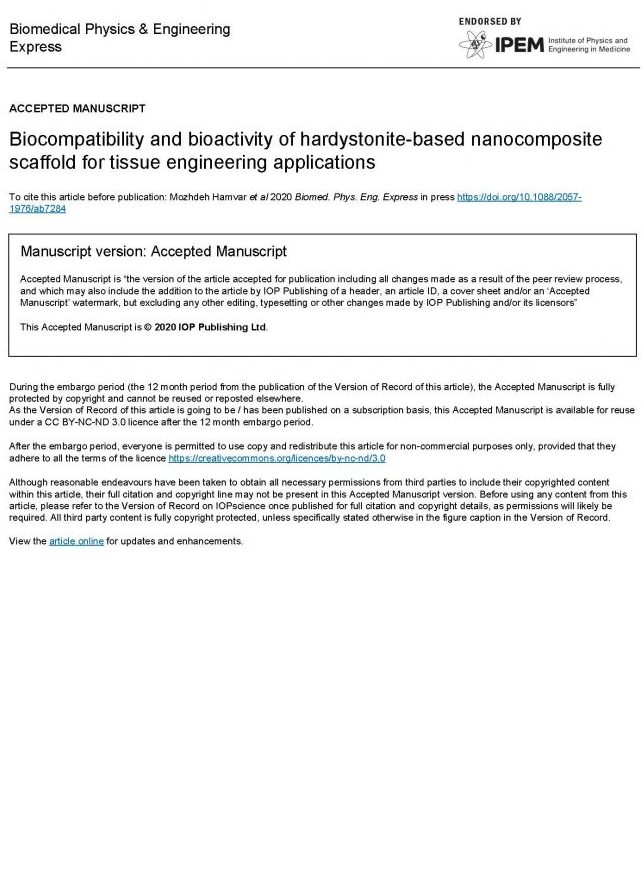Biocompatibility and bioactivity of hardystonite-based nanocomposite scaffold for tissue engineering applications
Abstract
Bone injury, especially bone damages due to the removal of bone tumors, is one of the most important issues in the field of therapeutic research in tissue engineering applications. In this context, ceramic-based composites have attracted widespread attention since they have mechanical properties close to the natural bone, hence providing similar conditions for the extracellular matrix (ECM). Thus, in this study, hardystonite and diopside (HT-Di) scaffolds containing various diopside amounts from 5 to 25 wt% were prepared by the space holder method. The results revealed that the fabricated scaffolds contain 70%–75% porosity with a pore size of 300–500 μm and a compressive strength of about 0.54 to 1.71 MPa which is perfectly in the range of the compressive strength of the sponge bone. Noticeably, great apatite formation ability was observed in the scaffold with diopside, although the scaffold without diopside showed poor bioactivity. The MTT assay depicted that the inclusion of diopside into hardystonite scaffold resulted in dramatic enhancement in the MG-63 cell viability. Moreover, the scaffold with diopside offered greater cell attachment and spreading than the scaffold without diopside. Therefore, the synergistic effects of the scaffold with 12.5 wt% of diopside, including great mechanical characteristic, excellent bioactivity, and appealing biocompatibility enable it to be an appealing choice for bone tissue engineering applications.

